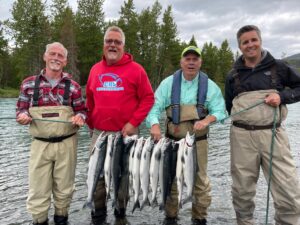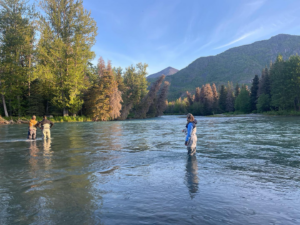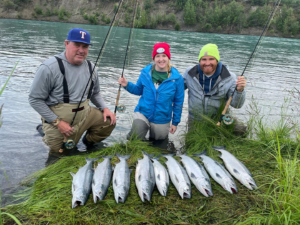Salmon fishing is an exciting outdoor activity that draws anglers to rivers and streams, often where others enjoy the natural surroundings with their pets. For anglers, an unexpected challenge can come from dogs near fishing spots, which can be a surprising and even hazardous situation. Taking precautions to stay safe and protect yourself from dog bites while salmon fishing is important, especially when you’re in remote areas or around dogs you’re unfamiliar with. A lawyer, like a dog bite lawyer, can attest that even a brief encounter with an aggressive dog can lead to serious injury, making awareness and preparation key parts of a safe fishing trip.
Understanding The Potential For Encounters
Salmon fishing often takes place in popular natural areas where other outdoor enthusiasts, including dog owners, are drawn. Many fishing spots are along scenic trails and riverbanks that serve as frequent walking areas for dogs. While most encounters with dogs are harmless, some dogs may react negatively to seeing unfamiliar people, the movements involved in casting and reeling, or even the smell of fish. Unpredictable environments, like uneven terrain or fast-moving water, can complicate these encounters, making it challenging to manage a sudden interaction with a dog.
Choosing A Safe Fishing Spot
Where you set up to fish can make a big difference in avoiding interactions with dogs. Opt for locations where you have a clear line of sight and can see people or pets approaching from a distance. If possible, choose areas slightly off popular walking trails, as dogs are less likely to venture far from these paths. This gives you space to focus on fishing without worrying about surprise encounters with passing dogs. Additionally, avoid areas where dog owners often allow their pets to roam off-leash. Many fishing spots post rules on whether dogs are required to be leashed, so being aware of these local guidelines can help you anticipate the likelihood of encountering off-leash dogs.
Keeping Calm And Aware Of Body Language
The team from Jason’s Guide Service knows that if you do encounter a dog near your fishing spot, remaining calm and aware of the dog’s body language can help you manage the situation. Dogs communicate through their posture, movement, and facial expressions. A dog that approaches with a relaxed body and wagging tail is generally friendly, but dogs that appear stiff, have raised hackles, or make prolonged eye contact may feel threatened or territorial.
It’s best to avoid sudden movements, especially waving your fishing pole, as this can appear aggressive or provoke a defensive response. Instead, keep your movements slow and steady. If the dog seems anxious, it’s wise to avoid eye contact, as staring can be interpreted as a challenge. Redirecting your attention to the water or another area can help diffuse the dog’s interest in you.
Respecting Space And Communicating With Dog Owners
When fishing near others, practicing courtesy and communicating with dog owners helps create a positive environment. If a dog seems too curious about your fishing gear, kindly ask the owner to call their dog back to avoid accidents or disruptions. Most owners will appreciate the polite communication and respect your space.
What To Do If You’re Bitten
Even with careful precautions, dog bites can happen. If you’re bitten, wash the wound immediately with clean water and apply antiseptic from your first aid kit. Infections can occur from dog bites, so it’s wise to seek medical attention as soon as possible, particularly if the skin is broken.
Reporting the incident to local authorities or animal control is a good idea, especially if the dog’s behavior was highly aggressive. Having a record of the incident helps in case medical or legal support is needed later. Attorneys like those at Cohen & Cohen recommend taking these precautions and keeping records of the incident, as this can support any claims for injury-related costs. If you were injured while fishing, speaking with your local lawyer is a good step to take, so reach out at your convenience.














